| Food Waste Friday this week happens to land on the same day as my #SAVEITSUNDAY post, and since both are about food waste, I thought it made sense to combine them.Here’s my waste…some pieces of leftover chicken.
I’m not pleased about this by any means, but you guys, if you saw the amount of leftovers we DID successfully make it through, you would understand why I’m feeling more relieved than frustrated.
I seriously thought it was going to be way, way worse than this. So, phew! And here’s my fridge, which is really empty by my standards, but is ridiculously full by Simply Being Mum‘s standards. She could probably eat from this fridge for two weeks. 😉
Alrighty. So, for the rest of the post, I want to talk about motivation. Because in my 5+ year battle against food waste in my home, I’ve learned that it’s important to know how to store and use up food, but I’ve also realized that it’s even more crucial to keep up my inspiration and motivation. After all, without motivation, all the food storage knowledge in the world is no good. To be terribly honest, even after five years at this, it’s still way easier to waste food than to save it. It takes effort to store food properly instead of just chucking it all in the fridge.
It takes effort to keep the fridge organized and to keep track of its contents. It takes effort to salvage food that’s a little past its prime. It takes effort to choose slightly-less-appetizing leftovers over brand new food. So, to keep going, you and I need some motivation. To that end, I’m going to share the things that keep me inspired to fight food waste, and hopefully they’ll help you too. 1. Think about the financial cost for yourself.I’d like to trot out some noble, selfless something-or-other for the top of the list, but honestly, this is probably the best way to self-motivate. The average American family throws out $1500 worth of food every year. $1,500. Yeah. You can think of about a million other things you’d rather do with $1,500, right? You could take a vacation, start an emergency fund, save for college, buy more local food, renovate something in your home, invest it, buy an SLR (oh, yes!), pay off some debt…the possibilities are endless.
And they’re pretty much all better options than throwing rotten chicken and slimy cucumbers into your trash can. It’s crazy to buy perfectly good food with perfectly good money and then throw it away. But often, we just don’t see it for the crazy that it is. It doesn’t happen $1,500 at a time, you know? It’s a squishy orange here, some Chinese leftovers there, and over time, it adds up. So, the next time you see a dish of leftovers or the last of a head of lettuce, look at it as part of the $1500. 2. Consider the the work that went into your food.One of the downsides of current food situation is the distance that it has created between us and the production of the food we eat.
This is at its most obvious when we eat out…we see nothing but the end product on our plates. But it’s also true that even when we grocery shop and cook at home, we don’t see all that went into getting those ingredients to the grocery store. I think this distance makes us forget the many hours of labor our food requires to make it from farm to fridge. I know that when I grow food (which I only do a little of, as I’m sort of a terrible gardener), that food has great value to me because of the work I put into it. I also feel the same way about food that I cook from scratch. If I let a loaf of store-bought bread mold, I’m sad, but I’m especially sad if the end of a loaf of homemade bread gets moldy.
I think there’s a two-pronged solution to this problem. One is to make and grow more of your food yourself, and the other is to make a point of remembering the lengths other people went to in order to bring you food. It’s one thing for people to labor to make food that we eat, and it’s quite another for them to labor over food that we forget about until it’s too late, and when I think of it that way, I’m freshly motivated to use what I buy. 3. Count the environmental cost.The distance between the field and our plate is significant here too. When we see the vast produce displays at our grocery stores, we often don’t think of the incredible environmental cost of food production.
Of course, some resources have to be used in order to feed us (I’m not advocating that we starve ourselves.). But using resources to produce food that we don’t eat…that’s just ridiculous. According to this 2010 study, we use the equivalent of 350 million barrels of oil annually to produce food that ultimately gets wasted. And that study was using very conservative and slightly dated numbers, so we’re probably wasting even more than that. Not only is there significant resource usage in the production of the food we throw away, there’s also the difficulty of disposing of all of this wasted food. Food waste is the second largest component of landfills, and anaerobically rotting food (food that rots without oxygen, as it does in landfills) produces methane, a greenhouse gas that is at least 25 times more powerful in global warming than carbon dioxide. Environmental problems are often overwhelming, but you can do your part to help by buying only what you need and by using what you do buy. 4. Don’t hide it.If the above three things don’t sufficiently motivate you, get some accountability going. When my food waste was seen only by me, it was much easier to ignore it. But once I started posting weekly pictures of my food waste here on my blog, I was so much more motivated to shop carefully and to use up the food I bought.
Not everyone has a blog, of course, but there are other ways to keep yourself accountable. Get your roommates or family members on board, or find a like-minded friend, and challenge each other to reduce your food waste. You can also gather inspiration from the over 28,000 people who’ve taken Glad’s #SAVEITSUNDAY pledge to love food more and waste it less, and use the Protection Pointers to help keep your food fresher longer. Having other people involved will keep you on track, yes, but it’ll also make it more fun. Heroically saving wilting lettuce by making a soup is much more rewarding if you get to tell someone else about it. 😉 _____________________ These four things are what help me keep going, but I’d love to what else motivates you to reduce your food waste? This post is sponsored by Glad, but all text, photos, and opinions are my own, and I’m delighted to be working with them on the #SAVEITSUNDAY campaign, since food waste is a topic near and dear to my own heart. |

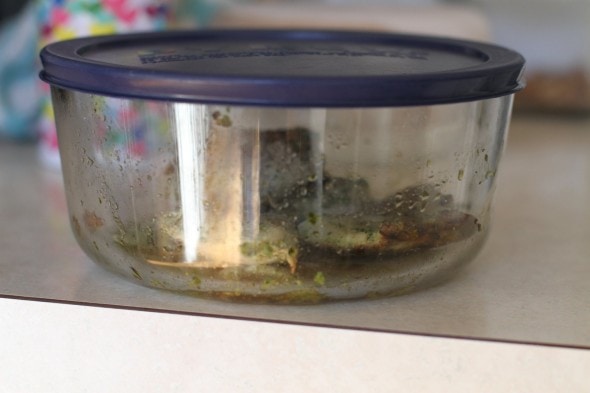
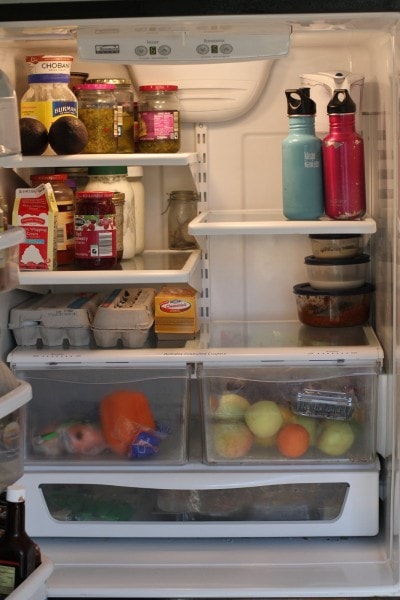
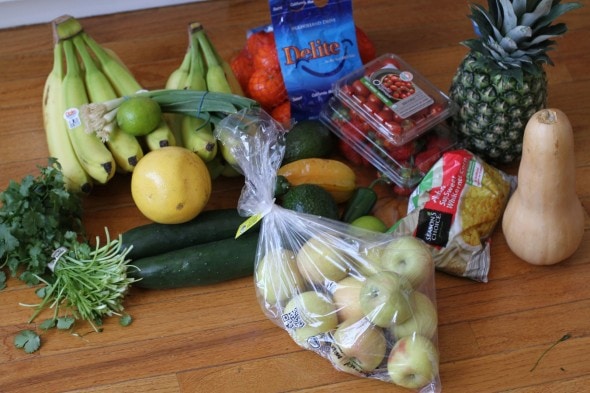
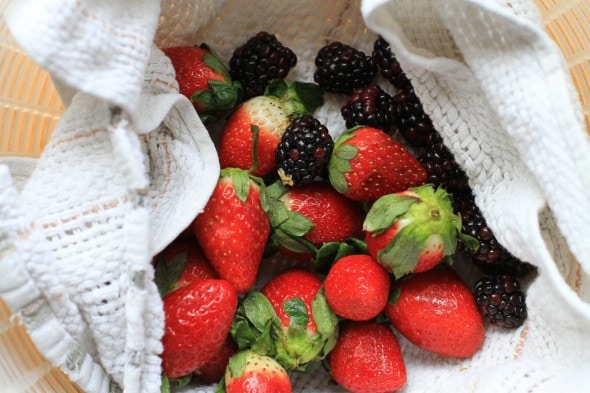
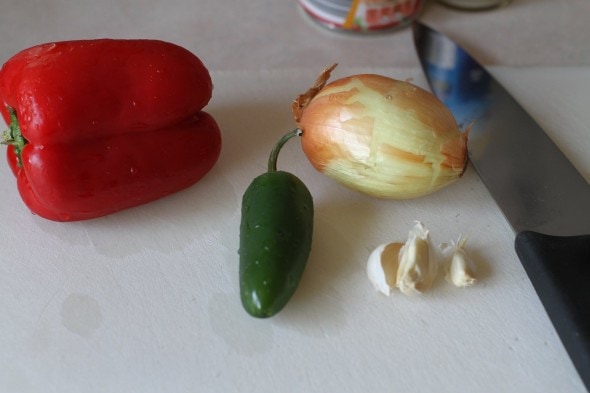
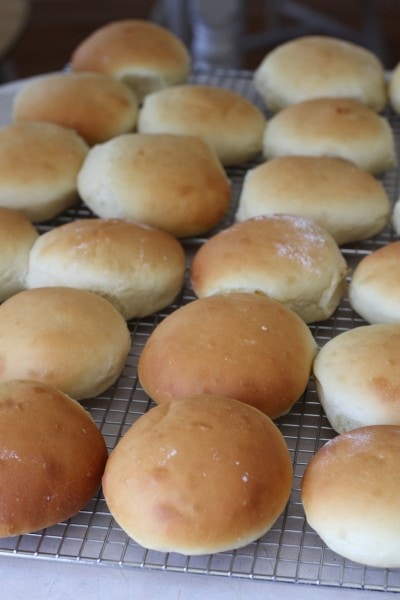

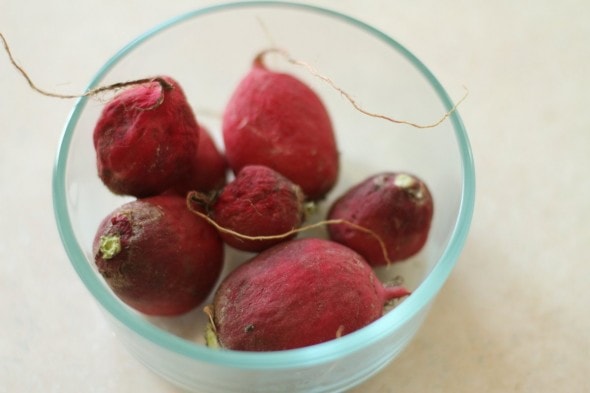
toby
Monday 10th of March 2014
I noticed you had two avacados in your fridge. I often eat one or 1/2 avacado per day and I normally purchase no less than 4 to 6 at a time. Very few go bad on me and if any do it is most often a remaining uneaten half (which I store refigerated and wrapped in a foldlock sandwich bag with the seed intact and facing down). The others are placed in a size appropriate brown paper bag which I fold shut and keep on my kitchen counter. Not ! in the refrigerator. I try to buy both green and fully ripe with the majority the not-so ripe ones. Use the softest ones first altho generally the last one is just as good as the first. Try it and tweak it as needed. For me, purchasing 5 un-ripe and 1 ripe is better than purchasing 3 ripe and hopeing for the best. I have bought 10 at value with very good results.
Vanyel
Sunday 2nd of March 2014
I wasn't personally responsible for that much waste this week (just two items), but I"m sure here was more waste that I didn't see. Time to get my family feeling accountable!
Linking up: http://vanyelshadow.wordpress.com/2014/02/27/food-waste-friday-cucumbers-and-eggs/
Jacquie Ottman
Saturday 1st of March 2014
Love the leftovers! Love these ideas, Frugal Gal. Really, no food should ever go to waste. There are so many easy ways to use up leftovers especially. Here's a great post written by a chef who actually helps people use up the leftovers. Check it out: http://www.wehatetowaste.com/king-county-love-leftovers/
Live and Learn-Toss and Turn
Saturday 1st of March 2014
A timely post for me also. I have a lot going these days, so food waste has not been at the top of my list to worry about. However, these reminders will help me get back into the swing of things.
R. J. Koehn
Saturday 1st of March 2014
This is a great informative post. These are all things I've been learning about the past four years since my son was born. I come from a family of farmers and we still live in a community that is primarily agricultural, so knowledge of where our food comes from has never been a short coming of mine. However, when I started reading your blog a few years ago I really started thinking about, not only the food we eat from a waste perspective, but our nutrition. And, like another poster stated, planning ahead is such an important step towards reducing waste, and improving the way you eat. I actually came at this like I was one of the last people in the world who hadn't figured out the importance of menu planning. However, the last few months I am a little surprised by how many people don't plan meals, and don't really think about their food or grocery bills. When I mention what I do to them it is a novel idea, and many think it is too much work, even before they give it a try.